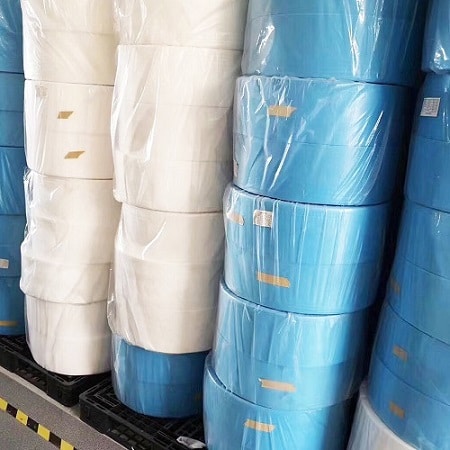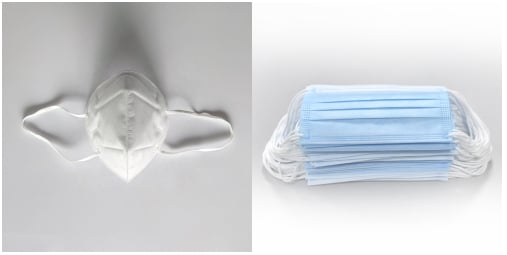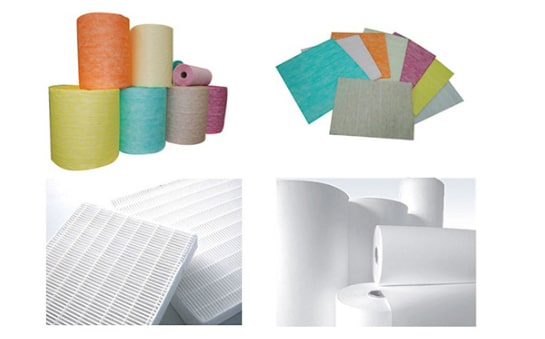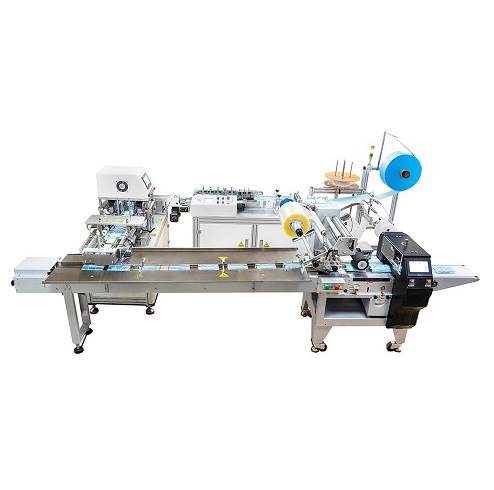Now, mask factories in European and American countries are facing some pressure: on the one…
Meltblown Nonwoven Fabric: Guide to Classification and Marking
The meltblown nonwoven fabric in the field of warmth, filtration, oil absorption, sound insulation, and other areas have a wide range of applications, the COVID-19, due to the meltblown fabric market supply exceeds demand, the market has a meltblown fabric logo is not clear, not standardized, and even fake, inferior to the good situation. In order to further standardize the industry production and market behavior, the China Industrial Textile Industry Association has developed this guide.

Table of Contents
1 Application Scope
This guide specifies the classification and marking requirements for meltblown nonwoven fabric and applies to the marking management in the production, transportation, and trade of meltblown nonwoven.
2 Classification and Definitions of Product
Melt-blown nonwoven fabric is fibrous nets manufactured by the melt-blown mesh method and cemented by one or more techniques. According to the use, it can be divided into meltblown nonwovens for masks, meltblown nonwovens for air purifiers, meltblown nonwovens for liquid filtration, meltblown nonwovens for insulation, meltblown nonwovens for oil absorption and other meltblown nonwovens, the relevant definitions are as follows.

Meltblown nonwovens for masks: used for face masks, anti-particulate respirators and other products, mainly for filtering and purifying inhalation of human air.

Meltblown nonwovens for air purifiers: used for air conditioners, air purifiers and other products, mainly for filtering and purifying the air.

Melt spray nonwovens for thermal insulation: used for garments, warm flakes and other products, mainly for thermal insulation and heat preservation.

Oil-absorbing meltblown nonwovens: used for oil-absorbing mats, oil-absorbing ropes, and other products, mainly for oil-absorbing purposes.
3 Marking Content
Each packaging unit of meltblown nonwoven fabric should be accompanied by identification contents including product category, manufacturer’s name, and address, production lot number, product specifications (quality per unit area, width, roll length and roll weight, etc.), implementation standards, production date, and shelf life, etc. Different categories of meltblown nonwoven fabric should also indicate their special indicators and indicator values, special indicators and test methods are shown in Table 1.
Table 1 Special indicators and test methods for meltblown nonwoven fabric
| Meltblown nonwoven fabric |
Marking content | |
| Specific indicators | Test method | |
| Meltblown nonwoven for face masks |
Filtration efficiency and resistance |
GB/T 38413 2019, Test method for the filtration performance of textile fine particulate matter, particulate matter filtration efficiency and resistance. YY 0469-2011, Bacterial filtration efficiency, particulate matter filtration efficiency and pressure difference in medical-surgical masks. |
| Meltblown nonwovens for air purifiers |
Filtration efficiency and resistance |
GB/T 38413-2019, Textile fine particulate matter filtration performance tests, particulate matter filtration efficiency and resistance. |
| Meltblown nonwoven fabric for liquid filtration |
Maximum and average pore size |
GB/T 32361-2015, Separation membrane pore size test method, bubble point and mean flow method |
| Air permeability | GB/T 24218.15-2018, Test methods for textiles, nonwovens, part 15: Permeability test |
|
| Meltblown nonwovens for thermal insulation |
thermal resistance value |
GB/T 11048-2018 Physiological comfort of textiles, determination of thermal and wet resistance under steady-state conditions |
| Oil-absorbing meltblown nonwovens |
Oil absorption multiple and oil absorption time |
FZ/T 01130-2016, Testing and evaluation of the oil absorption properties of non-woven fabrics |
| Other meltblown nonwovens |
Contractually agreed | Contractually agreed |
Note
3.1 The filtration efficiency and resistance index of meltblown nonwoven fabric for masks can be selected according to the appropriate test method in the table for the target mask product, and the selected method is indicated in the special index label. The method GB/T 38413-2019 should also specify the pre-treatment conditions, the type of test media and the test flow rate, which should be (30±2)L/min or (85±2)L/min.
3.2 Special sampling requirements for meltblown nonwovens: 1 to 2 meters from the outermost end of the coil length direction, according to the test method requires the number of samples, evenly sampled in the width direction.
The table shows the commonly used test methods in the industry, if other test methods are used, please specify.
4 Marking Form
The logo should be used in a variety of forms, such as general identification, electronic identification, barcodes, two-dimensional codes, enterprises should take appropriate ways to identify the anti-counterfeiting treatment.
5 Methods and materials of marking
The marking should be printed, stamped, rolled, hung, labeled and hung, etc., and one or more marking methods should be used. The marking material should be hard plastic, cardboard, paper stickers, etc.
6 Location of markings
Marking shall be in the appropriate place on the initial packaging of each packaging unit and inside the packaging.
7 Management of markings
Insufficient number of markings due to incorrect operation in the logistics process, compensatory markings should be implemented. The logo should be eye-catching, solid, and reliable, with a clear, standardized, and fade-resistant font. For adhesive signs should be flat, no creases, no corners, and adhesive ends.
Meltblown nonwoven is the core material for making face masks, spunbonded nonwoven, earbands, nose strips, and mask making machine are also needed to make complete face masks, and if you have the production credentials, these face mask materials and machines will be a worthwhile option for you.
Buy Face Mask Material: PP Nonwoven Meltblown Fabric | ES Hot Air Cotton | Nose Wire | Earloops
Buy Medical Face Mask Machine, used to produce disposable medical face masks or surgical face masks in mass production.
Buy Medical Masks / Protective Clothing Tester, to make the medical masks or protective clothing safe and efficient to wear.




This Post Has 0 Comments